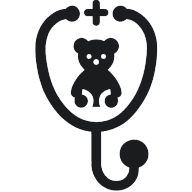What Tools Or Resources Are Useful in Pediatric Care?
In the quest for innovative tools that enhance pediatric care, we've gathered insights starting with a Child Life Specialist's 'Cope with the Poke' program. Alongside expert perspectives, we include additional answers that offer a broader range of resources being embraced in the field. From pioneering child-centric pain tools to adhering to the latest Pediatric Advanced Life Support (PALS) guidelines, discover six transformative tools that are reshaping pediatric care.
- Develop 'Cope with the Poke' Program
- Integrate Digital Health Apps
- Employ Medical Play Kits
- Utilize Interactive Educational Videos
- Adopt Child-Centric Pain Tools
- Follow Updated PALS Guidelines
Develop 'Cope with the Poke' Program
Members of our Child Life and Psychology Departments have teamed up to develop a program that aims to decrease anxiety and pain related to needle-based procedures. Through our program, 'Cope with the Poke,' we utilize developmentally appropriate preparation, coping techniques, and non-pharmacological pain management strategies to improve the hospital experience for pediatric patients and families. This program significantly enhances pediatric patients' coping, reducing distress related to procedures that are often perceived as scary.

Integrate Digital Health Apps
In the realm of pediatric care, digital health applications play a crucial role by allowing healthcare providers to observe and manage the well-being of young patients remotely. These applications not only streamline the process of recording health data but also make it easier for medical professionals to spot trends and potential issues in a child's health over time. They are especially useful in rural or underserved areas where access to pediatric specialists may be limited.
Additionally, they empower parents to be proactive participants in their child's healthcare journey. If you are a caregiver or a health professional, consider integrating e-Health technologies into your care strategy for the enhanced well-being of children.
Employ Medical Play Kits
Medical play kits offer a distinctive approach to pediatric healthcare, designed specifically to align with the developmental levels of children. Through the use of toys and medical equipment, such as stethoscopes or bandages, children can familiarize themselves with medical instruments in a comforting and playful environment. This not only helps in reducing anxiety but also prepares children for real medical procedures by demystifying the equipment and processes they may encounter.
It is a method that encourages participation and understanding, providing reassurance in a setting that could otherwise be intimidating. Healthcare providers and educators should consider employing medical play kits to facilitate a child-friendly experience in medical settings.
Utilize Interactive Educational Videos
The use of interactive videos can significantly elevate the experience of pediatric patients by providing them with educational content regarding medical procedures in an engaging and comprehensible format. These child-friendly videos are designed to explain what will happen during a procedure, using language and visuals that are age-appropriate and less frightening for young patients. By doing so, they help in reducing pre-procedure anxiety and boosting the child’s cooperation during the actual procedure.
This resource is invaluable in creating an atmosphere of trust and understanding between healthcare providers and their young patients. Encourage the use of such interactive educational materials to better prepare children for medical procedures.
Adopt Child-Centric Pain Tools
Assessing pain in children is a complex challenge due to their varying levels of communication and understanding. Pain assessment tools that are specifically tailored to children help bridge this gap. They rely on visual scales, such as faces ranging from smiling to crying, allowing children to indicate their level of discomfort without the need for advanced verbal communication.
This approach not only provides healthcare workers with a more accurate assessment of the child's pain but also validates the child's feelings and fosters a more empathetic care environment. It's important for medical personnel to adopt these child-centric pain assessment methods to improve the quality of care for their youngest patients.
Follow Updated PALS Guidelines
Pediatric Advanced Life Support (PALS) guidelines provide a comprehensive protocol for healthcare providers to address critical situations involving children. These guidelines offer step-by-step procedures to manage life-threatening conditions with the goal of improving outcomes for pediatric patients. They are structured to be easily understood, ensuring that care providers can respond quickly and efficiently during emergencies.
As these guidelines are regularly updated based on the latest research, it’s crucial for healthcare professionals to stay informed and follow them closely. Ensure that your medical team is trained and current with PALS guidelines to deliver the best possible emergency care to children.

